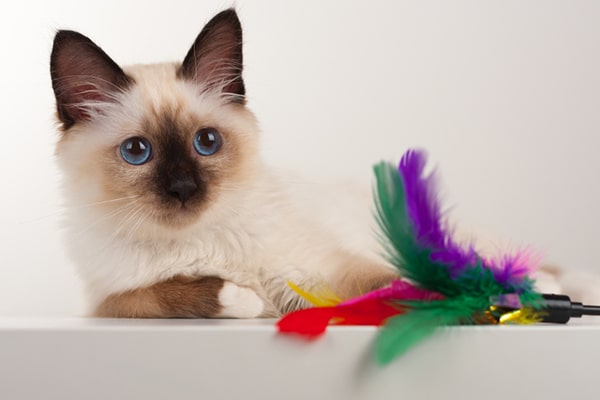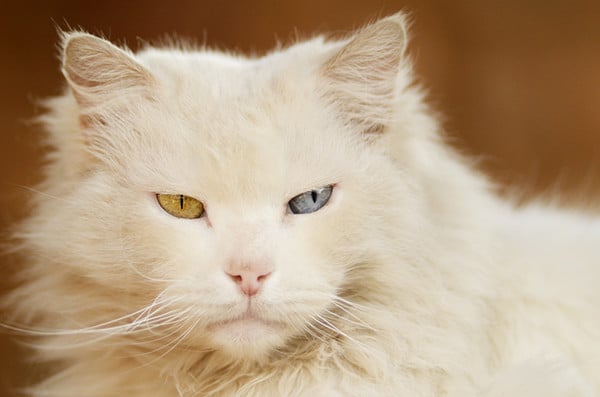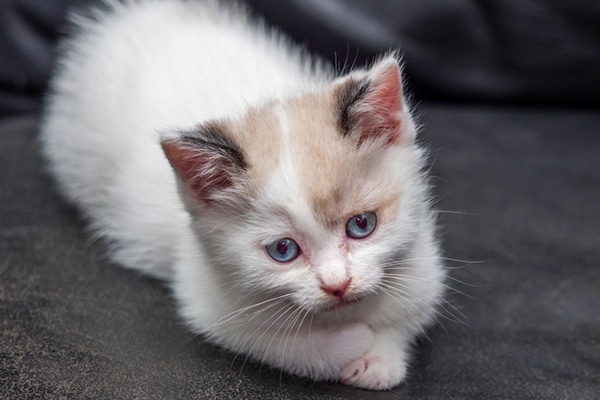"Most people think it's because of their blue eyes, that they're deaf or they don't know at all," Dr. Lyons says.
Here are a few things to know about blue-eyed cats, which almost always result from two coat colors: white or seal-pointed (a beige or fawn body with darker colors on the face, tail and legs).

1. Let's talk about breeds of blue-eyed cats
If you want a purebred blue-eyed cat, look for breeds with a seal-point coloration, which is genetically related to blue eyes. Breeds of blue-eyed cats include Siamese, Balinese, Himalayan, Persian, Burmese and Javanese. Ragdolls are known for their sparkling blue eyes, but not all Ragdolls have this color. There is also the very rare Ojos Azules breed, which can produce cats with dark coats and blue eyes. The blue eyes of these breeds are not related to deafness," explains Dr. Lyons.

2. What about white cats with blue eyes? What percentage of white cats with blue eyes are deaf?
It's a different story for blue-eyed white cats - about 60% of the dominant white kittens - which have obtained their coloring through mutations in a gene called KIT. In these cats, blue eyes are the result of a cellular problem: These irises have fewer melanocytes, which are cells that make pigment. These same cells create skin pigment and play a role in the functioning of the inner ear. As a result, cats with fewer melanocytes - white cats with blue eyes - may not have enough cells for their hearing to function properly, explains Dr. Lyons. White cats have a similar genetic makeup to albino humans, who lack pigment; this gives them certain vulnerabilities, such as sensitivity to UV rays.
It is estimated that 40% of white cats with blue eyes are deaf, which is high. But look at it this way: If 40% of these cats are deaf, it means that the majority (60%) can hear.
Some cats have different colored eyes, such as a blue eye and a green eye. In this case, Dr. Lyons says that hearing loss can occur in only one ear, especially on the side of the face with the blue eye.

3. If your kitten has blue eyes, they may not stay that color.
Like some human babies, all kittens are born with blue eyes that can change color later on. The hue begins to change to the kitten's true eye color around 6 or 7 weeks of age. The melanocytes of the iris - the pigment that gives the cat's eye its adult color - develop once the eye is mature enough.
4. How do you know if a blue-eyed cat is deaf?
If you want to know if a blue-eyed cat is deaf, move back a few meters behind it and clap or make another loud noise. If your cat reacts and looks towards you, it is probably not deaf, at least in both ears. Cats are very good at sensing non-auditory vibrations, so stand on the other side of the room to leave enough room," explains Dr. Lyons.
If you still can't tell if a white cat with blue eyes is deaf (or if you're curious about a cat's hearing problems), take him or her to your veterinarian for more definitive tests.
